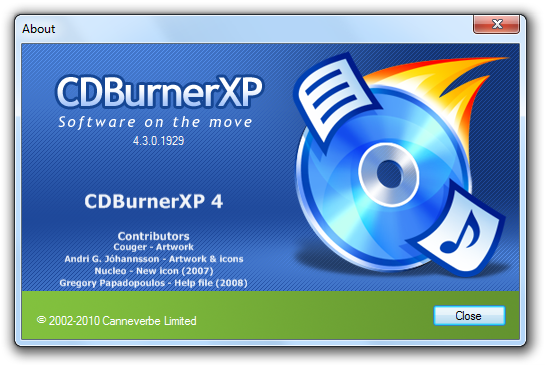Breakbeats
Al Green - I’m Glad You’re Mine (0:00)
[Eric B. & Rakim - Mahogany, The Notorious B.I.G. - I Got a Story to Tell, RZA - My Lovin' Is Digi]
Bad Bascomb – Black Grass (1:41)
[Doug E. Fresh - Everybody Got 2 Get Some, Monie Love - Monie In The Middle]
Billy Squier – Big Beat (0:00)
[Ice Cube – Jackin’ For Beats, Big Daddy Kane – Get Down, A Tribe Called Quest – We Can Get Down, EPMD – Get Wit This]
Booker T. & The M.G.'s - Born Under A Bad Sign
Booker T. Jones & William Bell - Born Under A Bad Sign
Bobby Byrd - Hot Pants (0:00)
[Sir Mix-a-Lot - One Time's Got No Case, Das EFX - Straight Out the Sewer, Ini Kamoze - Here Comes the Hotstepper, Run-DMC - What's It All About]
Chuck Brown and The Soul Searchers - Ashley’s Roach Clip (3:31)
[Eric B. & Rakim – Paid In Full, PM Dawn – Set Adrift On Memory Bliss, Nice & Smooth - Down the Line]
Dexter Wansel – Theme From The Planets (0:00)
[Eric B. & Rakim - I Ain't No Joke, Last Night by Kid 'N Play, Gutfest '89 by Digital Underground]
Donny Hathaway – Magnificent Sanctuary Band (0:00)
[Beastie Boys - Johnny Ryall]
Edwin Birdsong - Rapper Dapper Snapper (0:00)
[De La Soul - Me Myself and I, Gang Starr - Skills]
Fred Wesley and The J.B.'s - More Peas (7:22)
[Organized Konfusion - Fudge Pudge, Cypress Hill - The Phunky Feel One]
Funkadelic – Good Old Music (0:00)
[Young Black Male by 2Pac]
Kool & The Gang – Jungle Jazz (0:13)
Kool & The Gang - N.T.
[Jump by Kris Kross, Fakin' the Funk by Main Source]
Funk Inc. – Kool Is Back (1:48)
[Jeru the Damaja - Come Clean]
Isley Brothers – Footsteps In The Dark
James Brown - Blues and Pants (0:00)
[Ice-T - New Jack Hustler, Cypress Hill - The Phunky Feel One]
James Brown - Funky Drummer (5:35)
James Brown – Funky President (0:00)
Eric B. Is President by Eric B. & Rakim, Hey Ladies by Beastie Boys]
Jeff Beck – Come Dancing (0:00)
[Chino XL - It's All Bad, Gang Starr - New York Strait Talk]
Jimi Hendrix - Flashing (0:00)
Joe Tex – Papa Was Too (0:00)
[EPMD - Headbanger, Wu-Tang Clan - Wu-Tang Clan Ain't Nuthing Ta F*** Wit]
Lafayette Afro Rock Band - Hihache (0:00)
Led Zeppelin - When The Levee Breaks (0:00)
[Ice-T - Midnight, Eminem - Kim]
Little Feat - Fool Yourself (0:00)
[A Tribe Called Quest - Bonita Applebum, Organized Konfusion - Soundman]
Little Richard – The Rill Thing (0:00)
Lowell Fulsom - Tramp (0:00)
[House Of Pain - Jump Around, Cypress Hill - How I Could Just Kill A Man]
Lyn Collins - Think (About It) (1:23)
Manzel - Midnight Theme (0:00)
[Wreckx-N-Effect - Rump Shaker, Cypress Hill - How I Could Just Kill A Man]
Mountain - Long Red (Live) (0:00)
Melvin Bliss - Synthetic Substitution (0:00)
[Naughty By Nature - OPP, Ice-T - Original Gangster, The Pharcyde - Ya Mama]
Orange Crush – Action (0:25)
[Do You Want It... Do You Like It... by Puff Daddy, We Major by Kanye West]
Power of Zeus – Sorcerer of Isis (0:10)
[The Wiseguys - Face the Flames, Eminem - Amityville]
Q65 – Get Out Of My Life Woman
[Jeru the Damaja - Revenge of the Prophet (Part 5), The Wiseguys - We Be the Crew]
Roy Ayers – The Boogie Back (0:00)
[N.W.A - F*** Tha Police]
Silhouettes – Fonky First (0:00)
Skull Snaps – It’s A New Day (0:00)
[The Pharcyde - Passin' Me By, Digable Planets - For Corners]
Sly & the Family Stone - Sing a Simple Song (2:12)
The Headhunters – God Make Me Funky (0:09)
[Eric B. & Rakim - Beats for the Listeners]
The Honey Drippers - Impeach the President (0:00)
The Incredible Bongo Band - Apache (0:00)
[Sugarhill Gang - Apache, LL Cool J - You Can't Dance, Grandmaster Flash - Freelance]
The Meters – Here Comes The Meterman
[Big Daddy Kane - Long Live The Kane, Run-DMC - How'd Ya Do It Dee?]
The Meters - Look-Ka Py Py (0:50)
[Cypress Hill - The Phunky Feel One]
The Winstons - Amen, Brother (1:27)
[N.W.A. - Straight Out Of Compton, 3rd Bass - Portrait Of The Artist As A Hood, Brand Nubian - The Gods, Snow - Informer, Eric B. & Rakim - Casualties of War]
Young Holt Unlimited – Wah Wah Man
Zapp and Roger – More Bounce To The Ounce (0:00)
[EPMD – You Gots To Chill, Ice Cube – Jackin’ For Beats, Public Enemy – One Million Bottlebags, Ice Cube – Look Who’s Burnin’]
The Turtles – I’m Chief Kamanawanalea (0:00)
[Serious by Steady B feat. KRS-One, Say No Go by De La Soul, AmeriKKKa's Most Wanted by Ice Cube]
Grady Tate - Be Black Baby (0:00)
[Set It Off by Big Daddy Kane, Fakin' the Funk by Main Source, Stand Together by Beastie Boys]
Sounds
The J.B.'s - The Grunt (0:00)
Herbie Hancock - Wiggle Waggle (0:00)


